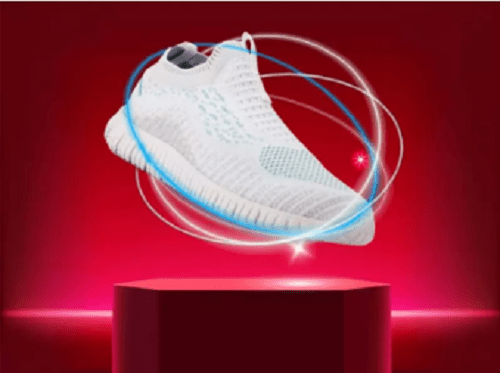In today’s fast-paced digital environment, advertisers are continuously looking for new and imaginative ways to attract the attention of their target audience. Traditional media such as print, radio, and television have long been pillars of advertising, but their effectiveness has declined as consumers seek more personalized and interactive experiences. Enter holographic advertising, an innovative technology with the potential to engage viewers like never before. Holographic advertisements, which generate three-dimensional visual representations in real space, provide a distinct combination of visual appeal, interactivity, and memorability. Let’s look at why holographic ads attract more attention than regular media and are transforming the advertising industry.
1. Immersive and Eye-Catching Visuals
One of the primary reasons holographic advertisements stand out is their capacity to provide immersive, three-dimensional graphics that are impossible to achieve using traditional media. Unlike flat images or films, holograms appear to hover in midair, giving a sense of depth and realism that draws attention in ways that traditional media cannot. The dynamic quality of holographic displays—whether rotating, interactive, or exhibiting different perspectives—captures viewers’ attention and makes the advertisement memorable.
For example, when consumers come across a holographic display in a retail store or public place, they are naturally drawn to the novelty of the experience. This increased visual stimulation results in longer viewing times, higher engagement, and, eventually, a stronger emotional connection to the brand.
2. Enhanced Interactivity and Engagement
Holographic ads offer more than just stunning visuals—they also provide interactivity, something traditional media often lacks. Consumers are no longer passive viewers but active participants, interacting with the content through touch or movement. Holographic displays allow users to interact with the ad by rotating, touching, or triggering additional content, creating a personalized and memorable experience.
For instance, a holographic ad might allow customers to explore different features of a product or preview how it looks in their environment. This level of interactivity encourages exploration and curiosity, making the experience more enjoyable and personal, which in turn increases the likelihood of conversion. Unlike static billboards or commercials, holograms can adapt to real-time user engagement, offering customized messages that feel tailored to each individual.
3. Increased Brand Recall and Memorability
Another significant advantage of holographic advertising is its ability to enhance brand recall. Traditional media, while effective in certain contexts, often blends into the background of our daily lives. Holographic ads, however, create lasting impressions due to their novelty and unique delivery format.
Research has shown that consumers are more likely to remember a holographic ad compared to a traditional one. This is because holograms tap into multiple senses—sight, sound, and touch—creating a more immersive and engaging experience. When an ad is presented in 3D, it stands out, making it easier for consumers to recall the brand and its message. This improved brand recall directly translates into better customer retention and long-term engagement.
4. Higher Consumer Engagement in Public Spaces
Holographic advertising is particularly effective in public spaces, where attention is usually divided among countless other visual stimuli. Whether in retail environments, airports, or urban settings, holographic displays draw more attention than traditional media like static billboards or TV screens.
For example, a holographic display in a shopping mall not only captures foot traffic but also engages passersby who might have otherwise ignored a traditional ad. In crowded public spaces, where people are distracted and constantly moving, the unique visual appeal of holographic ads helps them stand out. As a result, consumers are more likely to stop, interact, and absorb the message, leading to increased brand visibility and higher engagement.
5. Ability to Create Unique Brand Experiences
Holographic advertising allows brands to create unique, immersive experiences that resonate deeply with consumers. Unlike traditional media, which often relies on repetition and familiarity, holograms enable brands to tell stories in ways that are both innovative and memorable.
For example, a brand launching a new product can use a holographic ad to showcase its features in a way that feels innovative and fresh. A 3D display might highlight the product’s functionality, design, and benefits in a visually stunning manner, making it easier for consumers to connect with the brand. This differentiation helps brands stand out in a crowded marketplace, providing a unique and unforgettable brand experience that consumers are more likely to share and discuss with others.
6. Integration with Digital Platforms for Enhanced Reach
Holographic ads are not just limited to physical spaces—they can also be integrated with digital platforms to expand their reach. For example, augmented reality (AR) applications can overlay holographic content onto real-world environments through smartphones or AR glasses. This integration allows brands to connect the physical world with digital platforms, creating a seamless and interactive experience for users.
By combining the power of holography with digital technologies, brands can deliver highly personalized and engaging experiences to a global audience. For instance, a fashion brand might create a holographic try-on experience using AR, enabling users to visualize how clothing would look on themselves without ever visiting a physical store.
7. Cost-Effectiveness and Scalability
While holographic advertising might seem expensive initially due to the advanced technology involved, it offers long-term cost benefits. Once the infrastructure is in place, holographic displays require minimal ongoing costs compared to traditional media formats like TV advertising or printed billboards, which require continuous production and distribution.
Moreover, the scalability of holographic advertising is an added advantage. As technology advances, the cost of creating and deploying holographic ads is decreasing, making them more accessible for businesses of all sizes. Holographic displays can be installed in retail environments, trade shows, airports, and even online, ensuring broad coverage with relatively lower costs.
Conclusion
Holographic advertising represents a transformative shift in the way brands capture and engage their audience. By leveraging immersive visuals, interactivity, and enhanced brand recall, holographic ads offer a unique and effective alternative to traditional media. In a world where consumers are bombarded with information, holographic advertising stands out by creating memorable, personalized, and engaging experiences. As the technology continues to evolve and become more accessible, businesses that adopt holographic advertising will have a significant advantage in capturing attention and driving brand engagement.













